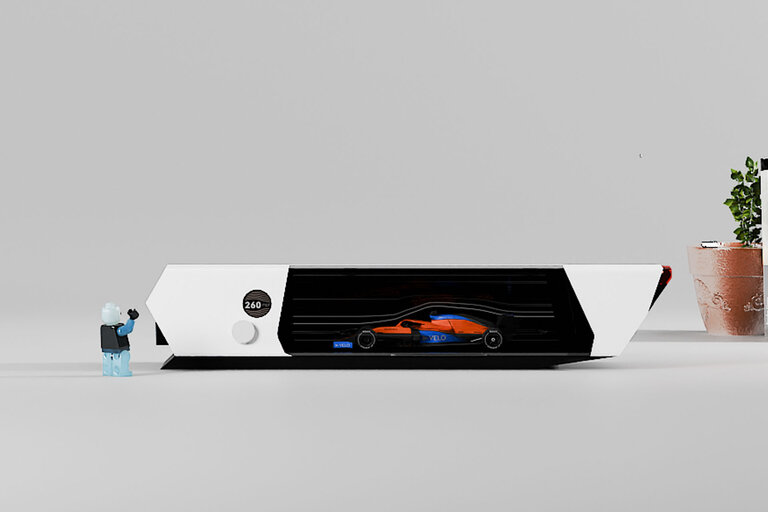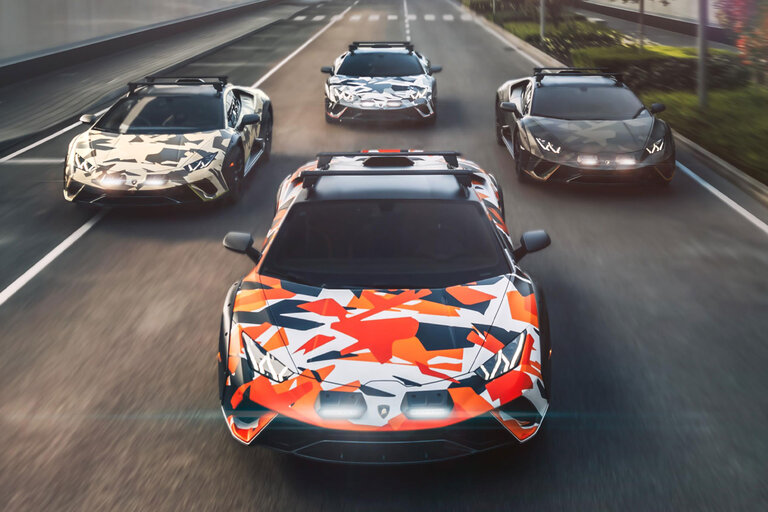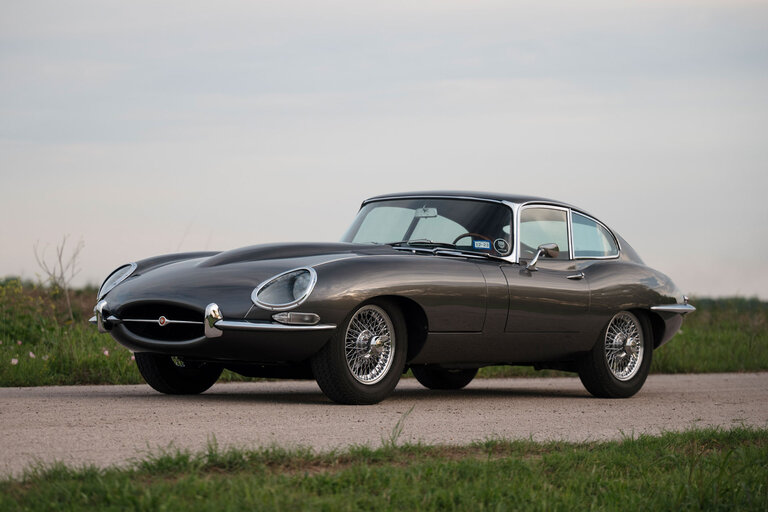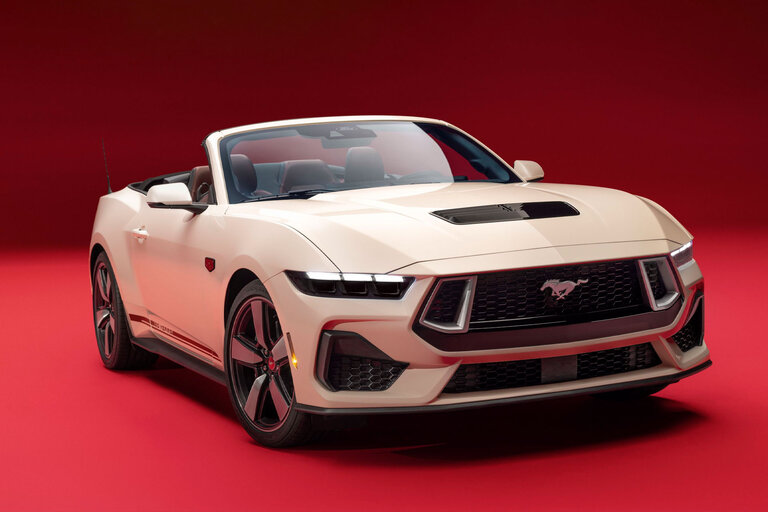
From the November 1983 issue of Car and Driver.
Late last year, Daimler-Benz AG invited a small group of American journalists to one of their traditionally opulent long-lead previews. This involved a trip to Seville and the Andalusian region of Spain, where the writers, including our own editor-publisher, were exposed to the long-awaited, almost mystical “baby” Mercedes. Constant readers will recall DED, Jr.’s, enthusiastic encounter with the gasoline-powered 190E in the March 1983 issue. While the automobiles Mr. Davis and his fellow travelers drove were the European versions with about five more horsepower each, they were essentially similar to the ones that will reach American customers this autumn. What DBAG did in Spain was to stage a kind of preview of a preview: the official. American introduction took place this August, again with traditional Mercedes-Benz elegance, at West Virginia’s splendid old Greenbrier resort and at Indianapolis Motor Speedway
By the time the press gathered in the lush hills of West Virginia, the details of the 190-series cars (code-named 201 by the factory) were well known to just about everyone in and out of the business: front-engine, rear-drive, independently suspended four-door sedans carrying fuel-injected, OHC four-cylinder engines (2.2-liter diesel and 2.3-liter gasoline-powered, with 72 and 113 SAE net hp, respectively). The single body style would be about fifteen inches shorter in overall length and approximately five inches shorter in wheelbase (104.9 versus 110.0) than the existing midsized 300D. The curb weight, at 2680 pounds, would be at least 800 pounds shy of the 123’s (the old bread-and-butter 240D has been purged from the lineup, to be replaced by the 190D). This we knew already when we assembled in a Greenbrier conference room for the traditional technical briefing, where a number of Mercedes-Benz engineers discussed such niceties as the car’s computer-designed, five-link independent rear suspension and the neat front suspension, which incorporates giant, gas-pressurized MacPherson struts and separate coil springs mounted ahead and inboard of the struts (this was done, said the engineers, to soften the ride motions and to preserve space).
Late last year, Daimler-Benz AG invited a small group of American journalists to one of their traditionally opulent long-lead previews. This involved a trip to Seville and the Andalusian region of Spain, where the writers, including our own editor-publisher, were exposed to the long-awaited, almost mystical “baby” Mercedes. Constant readers will recall DED, Jr.’s, enthusiastic encounter with the gasoline-powered 190E in the March 1983 issue. While the automobiles Mr. Davis and his fellow travelers drove were the European versions with about five more horsepower each, they were essentially similar to the ones that will reach American customers this autumn. What DBAG did in Spain was to stage a kind of preview of a preview: the official. American introduction took place this August, again with traditional Mercedes-Benz elegance, at West Virginia’s splendid old Greenbrier resort and at Indianapolis Motor Speedway.
The technical types blunted the inevitable question about why front-wheel drive was eschewed by explaining that a conventional drivetrain provides broader “influence parameters”—that is, more independent functions for each wheel than fwd—while offering greater flexibility in selecting engines and transmissions and also reducing tire wear. Therefore, what emerged from the droning techno-jargon and the flashing 35mm schematics and graphs appeared to be a rather capacious, wedge-shaped five-passenger sedan, a car that was already being assaulted in the press as much too arrogantly overpriced to meet its sporting-sedan competition.
The engine specs sounded interesting, but hardly exciting enough to prompt any serious increases in one’s systolic rate. In fact, this M102 powerplant, as the factory calls it, has been around since 1980 and has been used in Europe on the mid-sized 123-series. It is a fifteen-degree slant four, built around a thin-walled cast-iron block with all the right stuff—crossflow head, hemispherical combustion chambers, and a single overhead cam driven by a roller chain. Of particular interest is a variation of the Bosch KE-Jetronic mechanical/electronic fuel-injection system, which in the event of a failure can operate in a full mechanical mode. No twin-turbocharged Wankel, no wild diesel derived from the C-111 record cars, yet a very advanced, carefully detailed powerplant in the contemporary idiom.
We learned further as the briefing wore on that both the 190D diesel and the 190E gas car will be available with a five-speed manual transmission designed and built by Daimler-Benz. The ratios vary slightly between the two models, but the basic transmissions are identical. A smaller version of the Merc four-speed automatic will also be offered (about 85 percent of the cars reaching the U.S. this year will have it because of the low initial availability of the five-speed). It is similar in design to the unit employed on the larger 500 and 380 models.
The briefing over, we occupied ourselves with some serious power drinking before sitting down to a Greenbrier feast that featured such low-cal delights as “Cushion of Lamb Tenderloin with Honey and Wild Thyme Glaze” and “Tourte Glacée Sarah Bernhardt with Sauce Melba,” accompanied by flagons of fine wine and lusty conversation. From there it was a lengthy stagger through the giant resort’s endless, cavernous hallways to the bar, where the creation of serious hangovers continued.
Early the next morning, we reassembled to drive the cars for the first time, the previous evening’s bacchanal having been undertaken despite the knowledge that a journey of some 450 miles was next on the agenda. We were to meander through the mountains of West Virginia, across the Ohio River to Cincinnati, with a final dash to Indianapolis, and we would be scored for both fuel economy and average speed. Fellow staffer Ms. Jean Lindamood was my teammate, but she had distinguished herself so remarkably both on the dance floor and at the bar that she was now in no shape to drive our neat little steel-gray, five-speed 190E. Head pounding, mouth dry, limbs weak, I climbed behind the wheel.
Suddenly I was back in Mercedes land. This wasn’t a new automobile so much as a perfect seven-eighths-scale model of the acclaimed S-class cars. All the trappings were in place: the matte-black steering wheel big enough for a bus driver, the traditional Mercedes instruments, the burnished panel of exotic zebrawood, the zany array of climate controls.
Yes, this was a mad scientist’s dream come true. A miniature Mercedes-Benz. It was all there: the automatic door locks, the electric sunroof, the power steering, the cruise control, the silent electric windows, twin illuminated vanity mirrors, a digital outside-temperature indicator (centigrade scale only), fully adjustable seats (in MB-Tex vinyl or optional leather or velour), the famed three-pointed star on the hood, and the signature of Gottlieb Daimler on the windshield. Wait a minute, this was no low-line Stuttgart Accord, this was a serious automobile!
Even the exhaust note was Mercedes. No lumpy four-banger flatulence here, but rather that throaty Mercedes moan that defies the ear to determine whether the powerplant is a V-16, a straight eight, or a flat twin.
The informal rally to Indianapolis would culminate in prize giving for the team getting the best average speed combined with the highest fuel mileage. Our health being at stake, it was decided to reach the sanctuary of the Speedway Motel adjacent to the famed track as quickly as possible. “Besides, total professionals don’ t care about fuel economy,” noted Lindamood as she downed another Extra-Strength Tylenol.
The first few miles consisted of Interstate travel, which the 190E negotiated at an indicated 110 mph with no apparent effort. The much acclaimed low-drag bodywork (Cd: 0.35) was doing what it was supposed to do: punch the car through the air with minimal turbulence. Like so many of the new generation German sedans-specifically the Audi 5000 and the larger BMWs-the Mercedes’ controls initially felt a bit rubbery, and its shift linkage, while silky in the extreme, tended to shroud the gates into third and fifth.
Hammering into the mountains, we discovered an Achilles’ heel. The Michelin MX L l75/70R-14 rubber, mounted on five-inch alloy rims, rewarded us with terminal understeer, i.e. , total front-end wash-out on several occasions. In our opinion, and in the opinion of some insider at Mercedes-Benz of North America, the car needs lower-profile tires regardless of the penalties in aerodynamic drag and fuel mileage. The 190E riding on six-inch rims mounted with something like 195/60HR-14 P6 Pirellis would be a marvel, many agree. Lindamood ran the Cincinnati-to-Indy Interstate section at 110 mph, breezing through what we later discovered was a giant Indiana State Police anti-speed pogrom. We arrived 35 minutes ahead of the second-place finisher and averaged a rather decent 64.5 mph for the journey, but our 24-mpg fuel consumption was sufficiently miserable to garner us the Friends of OPEC award at the final ceremonies. One team got as much as 40 mpg with their 190E (by drafting trucks, coasting hills, etc.). The winning diesel number for the trip was 41 mpg. Old friend and Indy superstar Parnelli Jones appeared the next morning to give high-speed tours around the Brickyard in the new 500SEL and SEC, while we sampled both diesel and 190E automatics on the big track. The diesel is a diesel. Nothing more, nothing less. It is superbly quiet and well mannered as the breed goes, but it remains a curiosity for cranks who perhaps shouldn’t be reading this magazine in the first place.
The 190E automatic, on the other hand, is a vividly pleasant automobile. It is silent and reasonably quick off the mark, even with its nonnal second-gear starts. Its third gear is well suited for passing situations, and its overall performance would be most satisfactory for those who shun sawing through the gears.
As we noted earlier, there was an initial irritation expressed in the automotive community when rumors about the baby Merc surfaced. Where did those Germans get of thinking they could dump a $24,000 Honda Accord replica on the American public? That was the recurrent grumble. Distress also passed through the writing community, where novelists and screenwriters had deemed that all Mercedes be big and black. How could you make a “little” Mercedes sound ominous? In short, the 190s came to this shore cloaked in more skepticism than any other Stuttgart products since the first postwar 170s. Now we have seen and driven the cars, and the tune has changed. These automobiles are not high-line Hondas, nor are they low-line Mercedes. These are I 90s- a meticulously crafted new breed of Mercedes so complete, so refined, so tightly integrated, so totally Mercedes-Benz that they present the impression that they have been hand-carved out of an ingot of chrome-molybdenum steel.
We went to the Greenbrier believing the 190 to be gratuitously overpriced: Four hundred fifty hard miles later, we arrived in Indianapolis convinced that it will turn out to be the biggest bargain from Germany since Wernher von Braun.
This content is created and maintained by a third party, and imported onto this page to help users provide their email addresses. You may be able to find more information about this and similar content at piano.io
Source link





